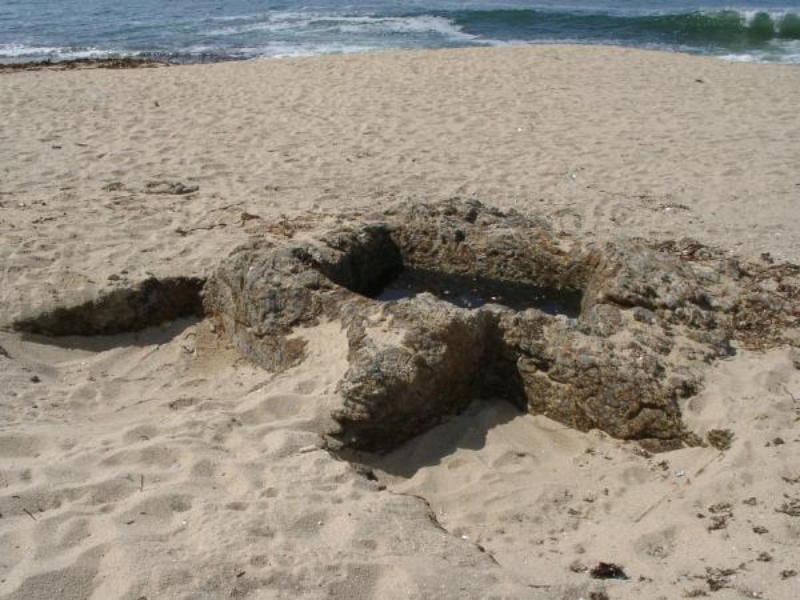Matosinhos
Matosinhos presents unique and real way, keeping the customs and traditions, its hospitable people who receive the visit always with a smile and ready to explain and tell the stories of their city.
House of Santiago
Erected by order of John Santiago de Carvalho e Sousa, as his residence, in the last decade of the nineteenth century this was known as “Quinta de Villa Franca”. This was designed by Nicola Bigaglia, an eclectic and revivalist architectural style, incorporating neo-medieval elements in a Renaissance tone. This was acquired by the city of Matosinhos in 1968, recovering and adapting it to have the museum function, directed by the architect Fernando Távora. In its second floor is a painting and sculpture exhibition, which highlights the collection of art Matosinhos Municipality of António Carneiro (1872-1930), Augustine Salgado (1905-1967) and Augusto Gomes (1910-1976 ). These three figures are related to Matosinhos and Leça, with three different readings of sea, land and people. This is open every day from 10.00 to 18.00 hours, ending on Monday.
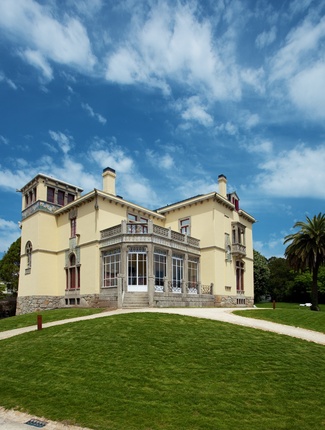
Fort of Our Lady of the Snows
After the restoration of independence in the year 1640, there is a need to better defend the coastline against Spaniards and pirates attacks, and built several fortresses, particularly in Leca da Palmeira. Here stands the fortress of Our Lady of the Snows, which together with the forts of S. João da Foz and St. Francis Xavier (Cheese Castle), defended the city of Porto. This is strong bastion type with star plant four corners, protected by steep walls and watchtowers, which began in 1651, aimed at replacing an older fortification. In 1844, it lost its military function and installed the Customs Port and in 1899 became the secretary of the Port of Leixões is currently captaincy that port. This is classified as a Public Interest in 1961.
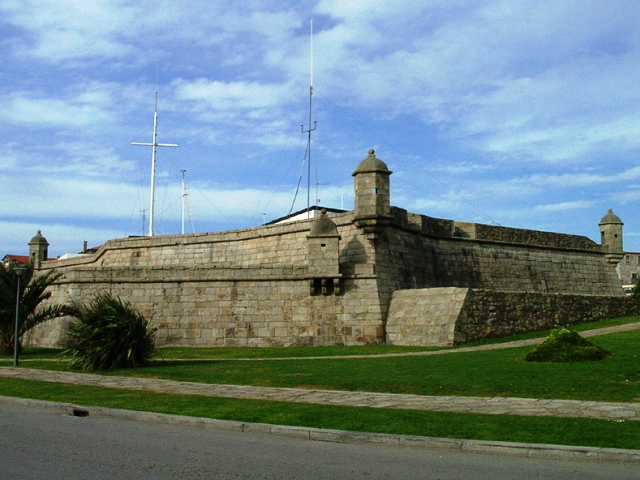
Castro Mount Castêlo
Near the mouth of the Leça River, in the old estuary, and current Port of Leixões, stands Mount Castêlo. Although not a closer elevation shore, their characteristics together with the strategic plateau conditions, have made this the best location for securing communities. The archaeological site dates back to the Iron Age / Romanization, one of the most important of the north of Portugal. also taking advantage of the estuary of the Leça, which is a real natural harbor and navigable shelter, to the foot of Mount Castêlo as plenty of exogenous materials in this area. Large amounts of amphorae, give the idea that from the second century BC, this castro maintained a regular business contact with the south of the Iberian Peninsula and the Mediterranean world. In the fifth century, this castro was the main trading post between Africa and Guifões, later in this century, Monte Castêlo been abandoned. Already in the ninth and tenth centuries, this was referenced in documents under the Castle area, where here was a fortification built in wood. Yet there are signs that had also occupied in the Middle Ages, due to gray ceramic fragments. This was classified as a Public Interest Monument in 1971 and in 1991 was set to its protection area.
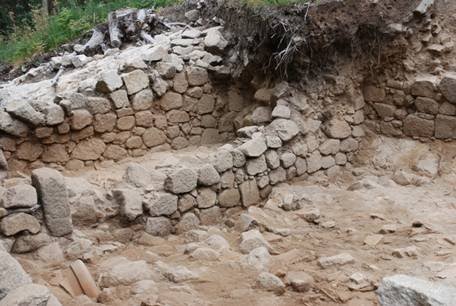
Man Mace
At the top of Monte de São Brás in Santa Cruz do Bispo, is an incomplete sculpture, with large, being recognized as the man Mace, a representation of an ancient warrior, a mythical hero. This work is accompanied by a zoomorphic sculpture, representing a lion with fantastic features. His interpretation of man Mace generates some controversy, as some authors consider it a copy of the Roman times, others claim that belong to escultórios sets of XVI century, decorated the “Fifth of Bishops.” Already the zoomorphic sculpture is a medieval work, similar to the bases of the medieval sarcophagi, which are still observed in the monastery church of Leça do Balio. It was tradition during the festival of São Brás, these are embraced by the necks, placing flowers for a quick marriage, as couples play to have sons, and as payment of promise poured wine at the head of the statue.
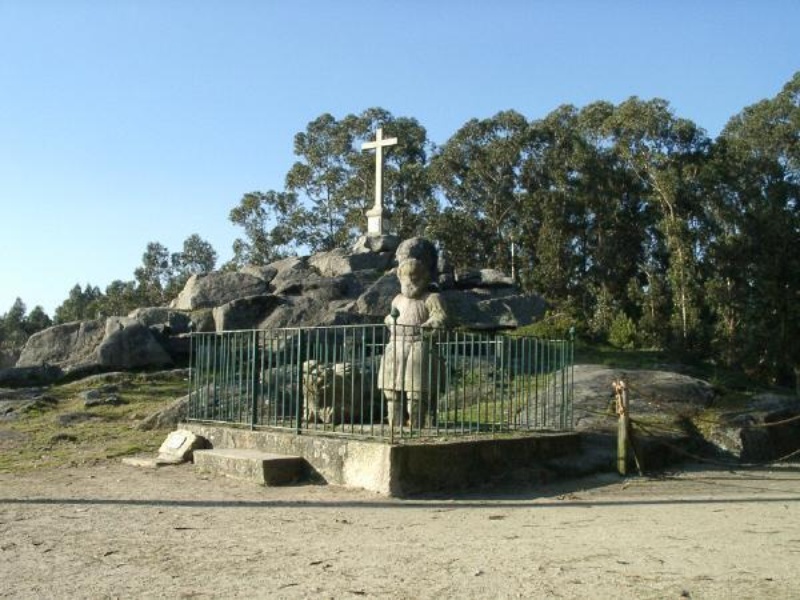
Church of Bom Jesus de Matosinhos
The missing Bouças Monastery bore the image of Bom Jesus de Bouças that due to the large degradation of the monastery, the image was transferred to a new church that was built in Matosinhos. Construction began in 1542 by the University of Coimbra, whom John III had granted the patronage of Matosinhos, having been hired John Rouen as a designer of the work, but was completed by Thomas Old. In the eighteenth century, the devotion of the Lord of Bouças increased with the demand of land in Brazil, which allowed the expansion of the church, the post of Nicolau Nasoni, getting the current stroke, which highlights the two bell towers, broken pediment, the main door decorated with medallion, which incorporates a scallop shell and the two side niches with statues of St. Peter and St. Paul. Its interior is divided into three naves, and highlighted the high altar of gilt, containing the image of Christ crucified, attributed to the twelfth century.
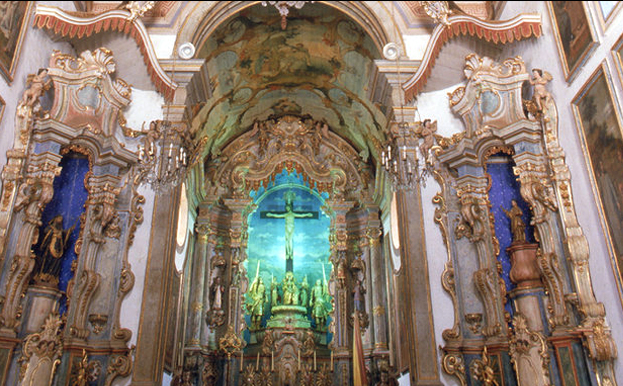
Leca do Balio Monastery
In Recarei, near the river Leça, this rises from the tenth century, which evoked S. Saviour of the World, accepting only members Trutesendo Osoredes family and his Unisco Mendes woman, a family of ancient nobility. In 1021, Unisco Mendes and his son Osoredo donated this monastery to Tudeildo, abbot of the monastery of Mozarabic Vacariça, near Coimbra. This donation marked an important period in the development of Leca, especially when Tudeildo takes refuge of Muslim incursions, at this site in 1026. A Gothic structure of the monument, which was remodeled and enlarged in the fourteenth century, at the initiative of Balio Friar Stephen Vasques of Pimentel. Only the monastery remains the cruciform church, accompanied by a square tower with balconies with boulders and half-height and at the top come loophole, which gives the church a military fortress. Inside, is the grave of Brother Stephen Vasques, a bronze plaque with various decorative motifs and the epitaph of the deceased in Leoneans characters. This was classified as a National Monument in 1910.
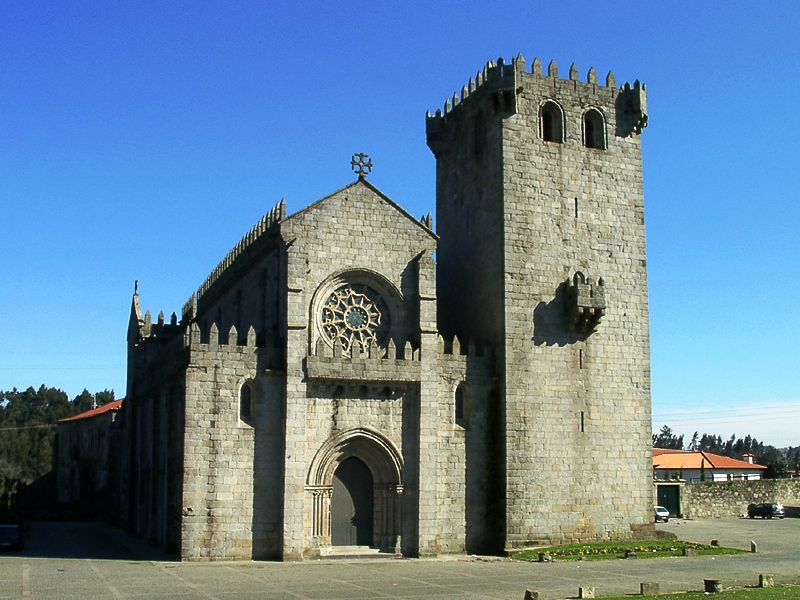
Hospital riders and the Commendation of Leca
In the twelfth century, Teresa donated Leca do Balio Monastery of the military-religious order of the Knights Hospitaller, who made this his first parent in Portuguese ground. In the year 1140, D. Afonso Henriques performs expansion work, giving jurisdiction over territory extended covering the parishes of Leça, Custóias, Barreiros, Gueifães and S. Mamede, by Couto Charter. The Hospital of the Order was founded in the context of the spirit of Crusade and Holy War, is an international organization dependent on the Pope, who had a mission, the protection and assistance to the pilgrims, such as participation in military raids against Muslims. For this monastery passed kings and queens, as Afonso Henriques and Sancho I, hosting Queen Santa Mafalda as the Constable Nuno Alvares Pereira, celebrating the marriage of King Ferdinand I and Leonor Teles here took place in 1372. The monastery always had an important role, both for its strategic position and to support the pilgrims who wished to visit the tomb of Santiago apostle in Compostela. In 1834 and with the abolition of Baliado Leca, due to the extinction of the religious orders, the monastery, except the church was abandoned and sold at auction. In the twentieth century it was in possession of Ezequiel de Campos Engineer, allowing profound works in terms of restoration and refurbishment.

Necropolis Medieval Montedouro
In Perafita, this necropolis consists of five non-anthropomorphic graves dug into the granitic rock, which originated from the Middle Ages, between Century VII and XI. In this there is the grave that lies on top of a hill in Montedouro, with an oval shape and edge. Due to the extraction of stone in this place, to the Port of Leixões, some graves were destroyed. Were also collected traces that present occupation in this area during Roman times, other materials identify the presence of prehistoric ceramics hand-made, from the Bronze Age. This necropolis was classified as Municipal Interest Monument.
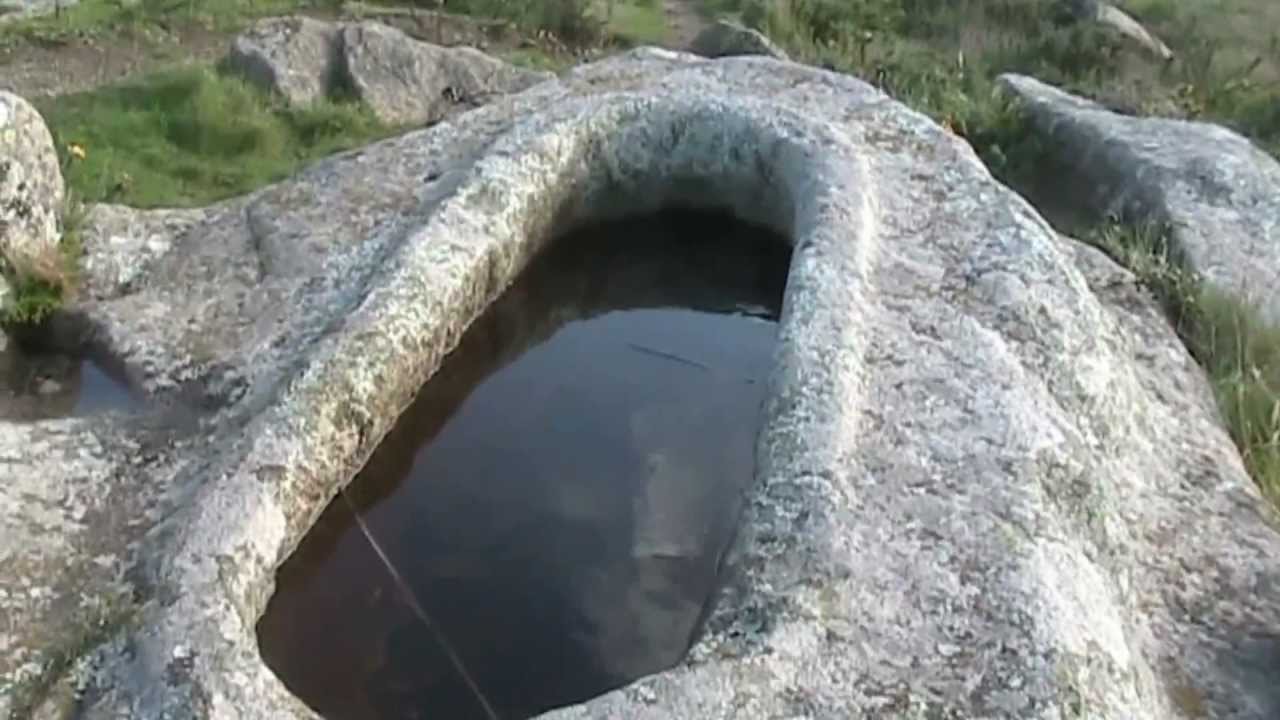
Obelisk of Memory Beach
On the beach next to the Arnosa Pampelido the July 8, 1832, was place that changed the course of history and marks the beginning of the end of absolutism in Portugal – a fleet with 7,500 men of D. Pedro IV command, landed on this beach with the aim of establishing a modern and liberal regime in Portugal. And this location, the absolutist army was surprised, as they awaited an attack in Lisbon, making the northern line had been unguarded. Thus the “Liberation Army” took to the Pier and resisted heroically for one year the “Siege of Porto.” In order to honor such an act, it was erected an obelisk at the initiative of António José de Ávila and public subscription. For 24 years, this obelisk was rising and in 1880 was classified as a National Monument. In 2001, it was restored on the initiative of the Municipality of Matosinhos.
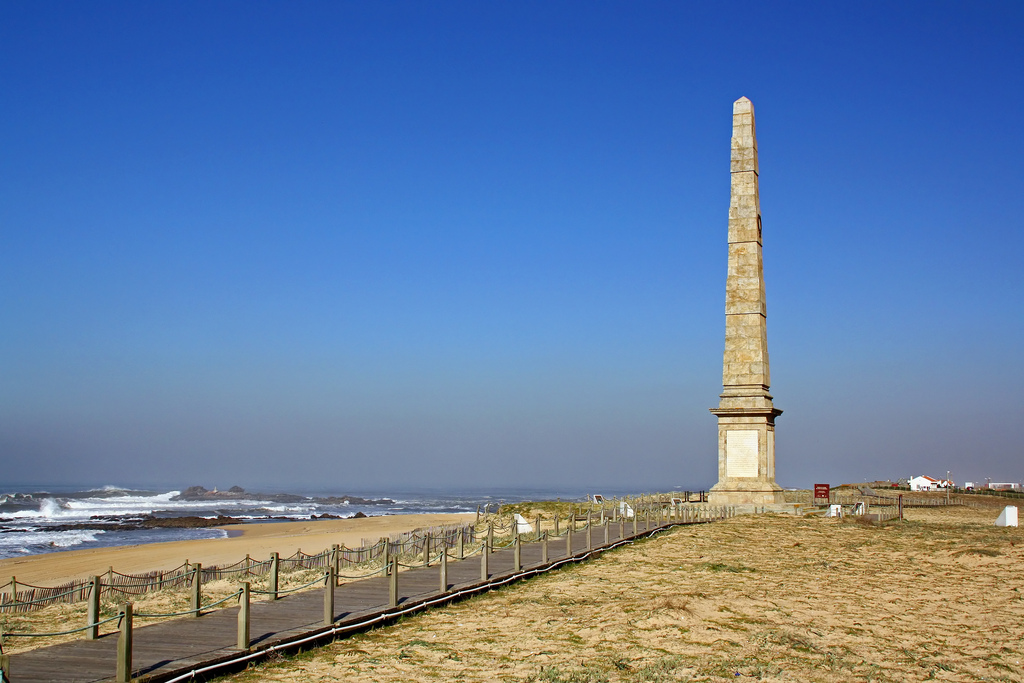
Historical bridges
The Matosinhos municipality is crossed by the river Leça in its entire length, being a communication route between the port to the main centers of the Peninsular Northwest, including Braga, Tuy and Santiago de Compostela, and from the Roman bridges were built, to facilitate the movement of people and goods:
Ronfes Bridge – with three arches perfectly round, this was part of a regional circulation pathway known as Karraria Antiqua, and a secondary road from the Roman era. This came from Cedofeita, through Monte dos Burgos, taking towards Gondivai and Araújo, for the region of Maia.
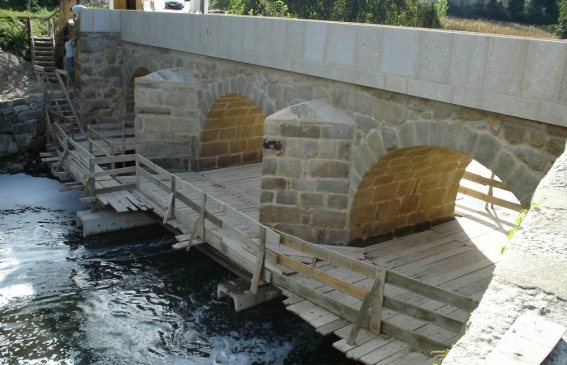
D. Goimil Bridge – easel accompanied with a pointed arch in masonry of granite, where its constructive typology is typical of the Middle Ages. Here passed a Roman road that began along the River Douro, passing Couto between Lordelo and Cedofeita, crossing the river Leca, heading for Aeroporto, Aveleda, Modivas and Vairão to the estuary of the river is an exemplary Ave. medieval civil architecture classified as Public Interest.
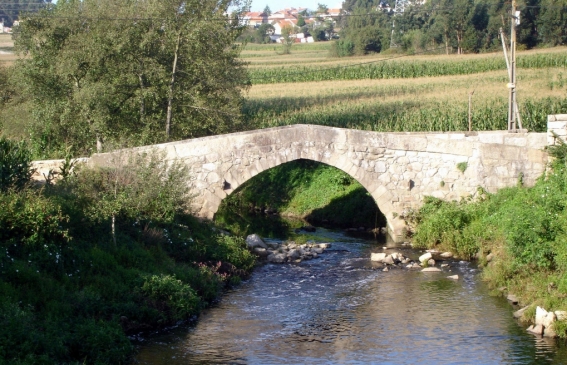
Guifões bridge – currently missing, this was at the foot of Castro de Guifões near the estuary of the river Leça. Masonry of regular granite, was composed of three arches perfectly round, typically the Middle Ages. This would link the estuary of the Ave and Vila do Conde, through the Roman villa of Lavra. In 1979, the bridge collapsed in a full river Leca.
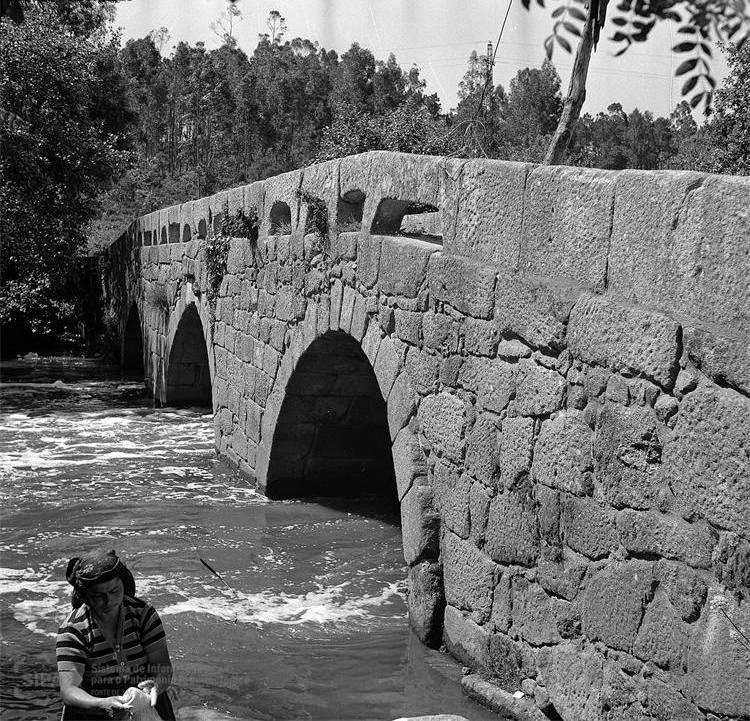
Carro bridge – easel with round arch, this was built in granite irregular masonry, with a typical construction of the Middle Ages. This example medieval public civil architecture, is classified as a Public Interest.
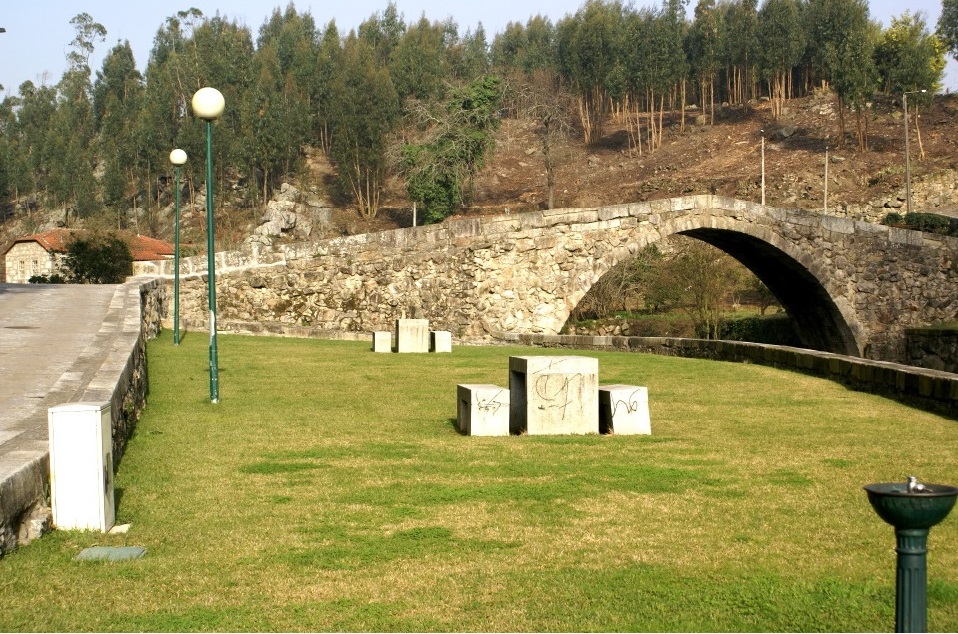
Pedra bridge – the Roman road that connected the city of Olisipo – Lisbon, the capital of Callaecia region the city of Bracara Augusta – Brag, and through Cale – Porto, this bridge dates back to the second century AD, with a flat board with a bow back perfect. Over the centuries it has undergone changes, but there are several “stones cushioned”, typical of Roman architecture.
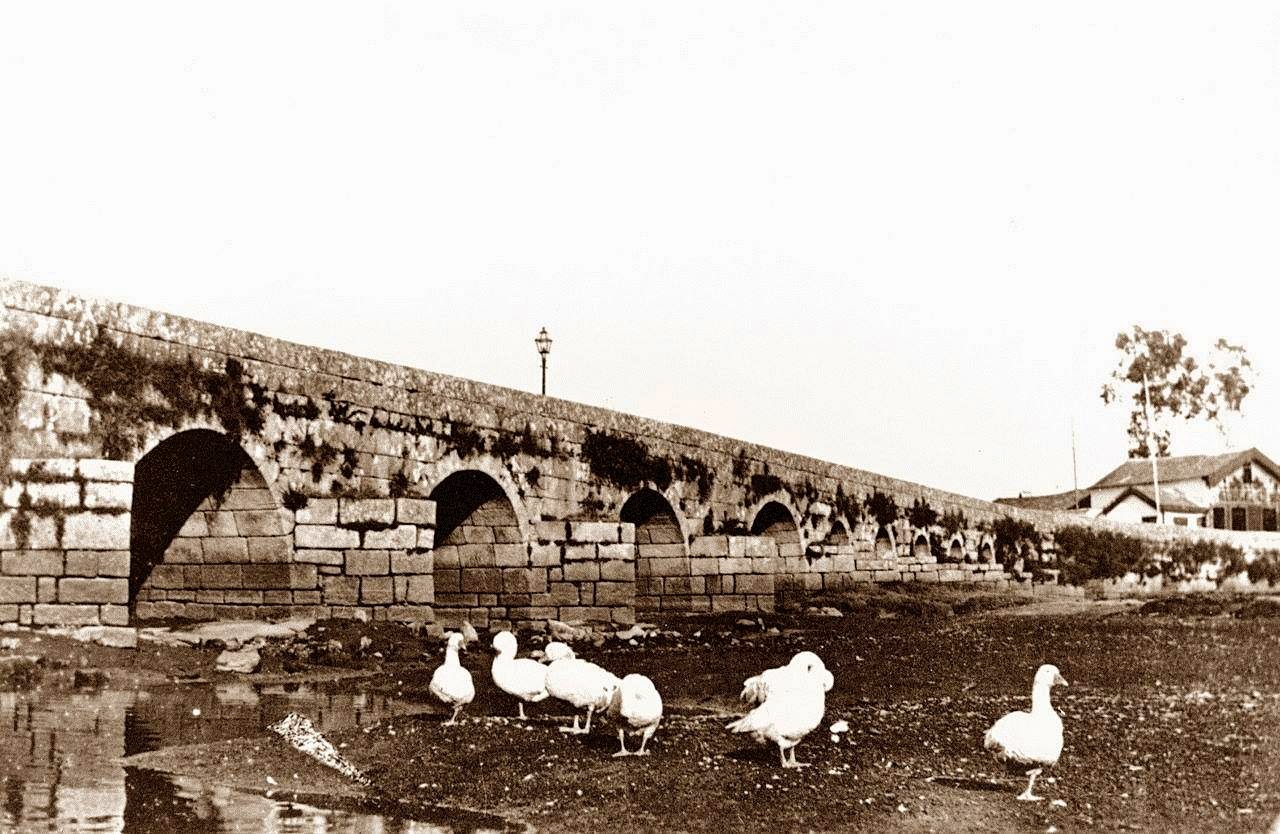
Quinta of Conceição
In the current public and municipal park of Matosinhos, which originated in 1481, installation of the Convent of Our Lady of the Conception of St. Francis Order. Decades later, due to the harsh nature of the site was transferred the monastery to a warmer place, going to the “Quinta da Granja” old. This convent little left and was sold at auction, after the extinction of religious orders. Today, the ancient cloister is visible, some monumental fountains and the St. Francis Chapel, which houses the tomb of Friar João da Povoa, former confessor of King John II and main driver of the new convent building. In the twentieth century, the Quinta da Conceição enters the possession of the Administration of Douro and Leixões Port, for the construction of the dock number 2 of its port. In 1956, the remaining property is leased by the Tourism Commission of the Matosinhos City Council, for the creation of the village park, having suffered over the decades improvements in charge of the architect Fernando Távora and highlighted is the tennis court and the author pool Architect Siza Vieira.
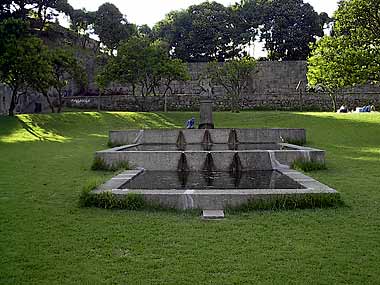
Quinta of Santa Cruz do Bispo
Built between the years 1552 and 1572, the Bishop of Porto D. Rodrigo Pinheiro, this aimed to create a place of rest, fun and recreation for you and your successors. Among the woods, trellises, multiple fountains, waterfalls, shrines, chapels and sculptural elements sent to erect for him, the magnificent house, which was the success of your project. Here, also find their home, great men of letters and arts of their times. Here are some examples: D. Rodrigo da Cunha, Manuel Faria and Sousa, Father Bartholomew of the Martyrs or brother Luis de Sousa. During the creation of this farm, the Italian architect Nicolau Nasoni is responsible for some architectural elements, particularly focused Baroque entrance to the Church Square, having been classified as a Public Interest in 1977.
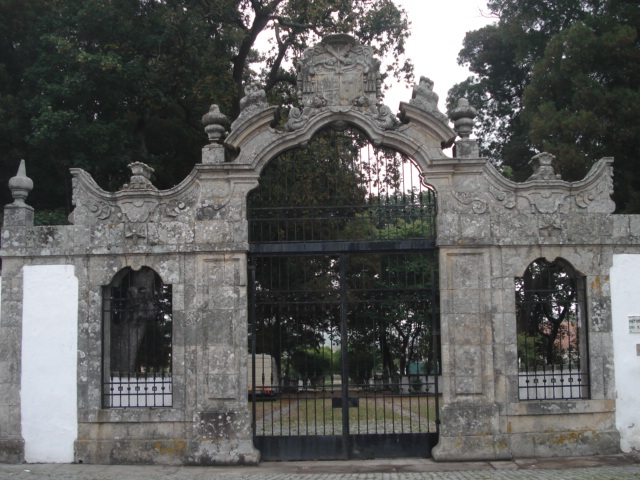
Senhor do Padrão
Eighteenth century, this is also known as “Lord of the Thorn” or “Lord of Sand”, rising on the site that according to legend, appears the image of Bom Jesus de Bouças, later known as Lord of Matosinhos. This monument of strong visual impact, found isolated in the middle of the beach “Praia do Espinheiro” being visible a few kilometers away, and until the twentieth century, this distance shortened. This religious devotion of Matosinhos fishermen, meets on November 1 thousands who make their praise. This was classified as a National Monument.
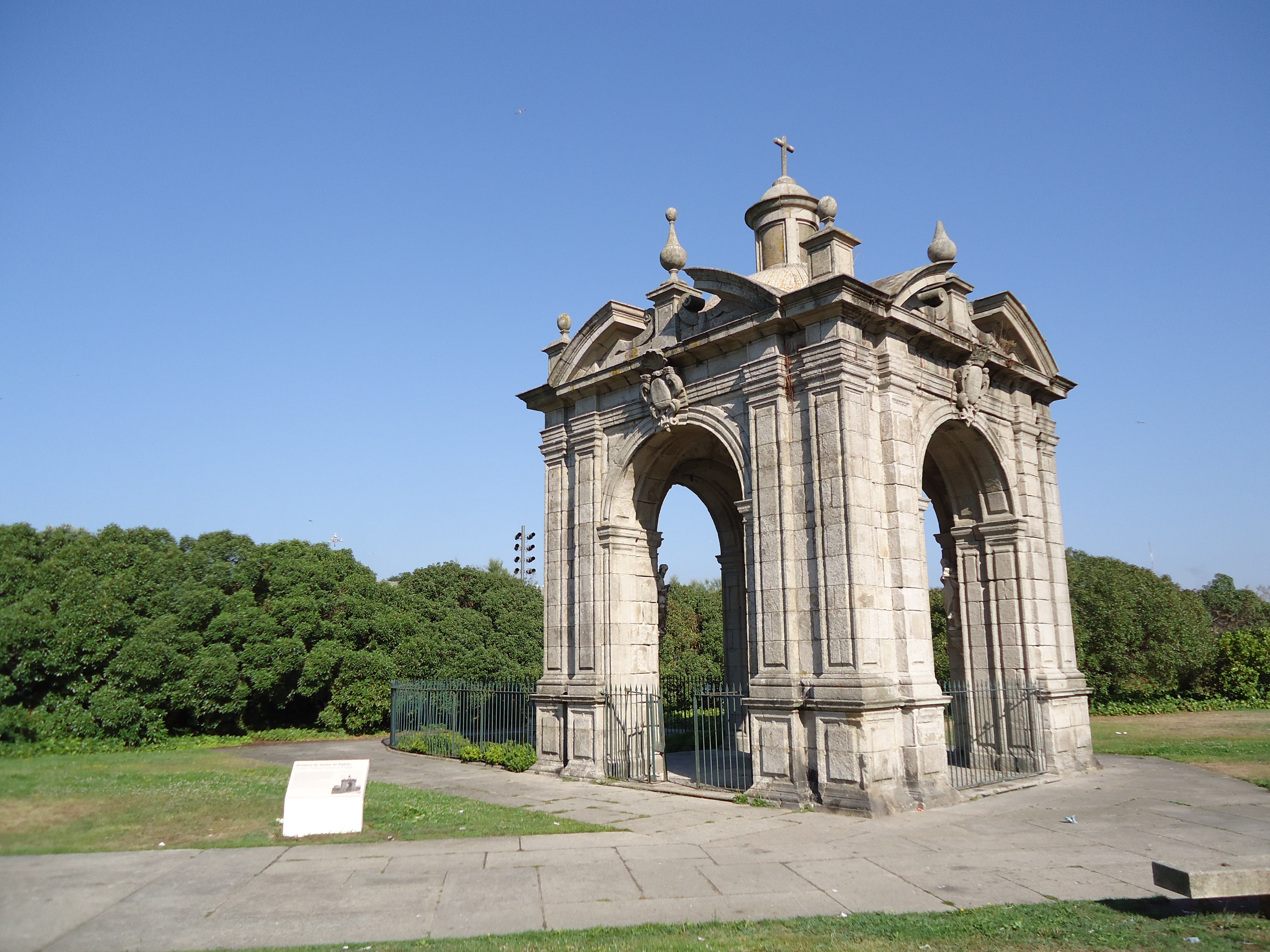
Roman tanks Angeiras and Villa of Fontão
In the sands of Angeiras, it is one of the most important archaeological sites of Roman times. A copy of the Roman industrial architecture that has a set of cetárias of the Lower Roman Empire, being single in the north. This has six sets of tanks, rectangular and trapezoidal excavated in the rock and scattered outcrop along the beach Angeiras, which were aimed at the fish salting or production of other types of fish preserves much appreciated in Roman times as the garum, a resultant paste maceration of various species of fish and mussels with wine, olive oil and other products. Between the rear of the parish church of Lavra and the beach are the remains of an archaeological site, an ancient Roman villa. Their traces are Ethnology Museum of Porto and others, Parish Priest Ramos Museum. This site also becomes very important in suévico-Visigoth due to the monastery’s founding in Lavra. However, the settlement of this place comes from the period of the first prehistoric communities, who left here their traces, Megalithic monuments in place of Antela, which according to the study of these date back to 2500-1500 BC The salting tanks Angeiras beach were classified as a National Monument.
